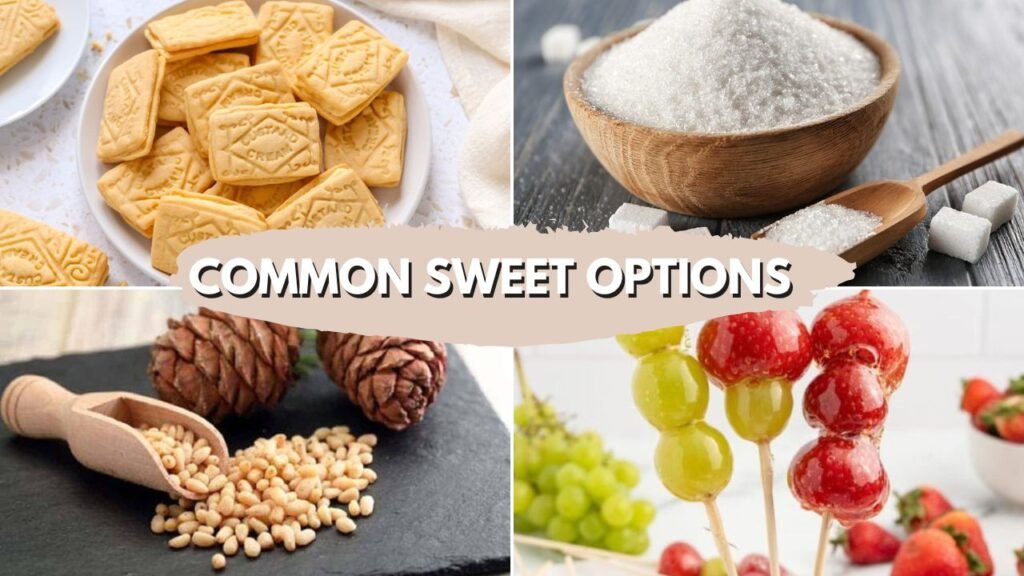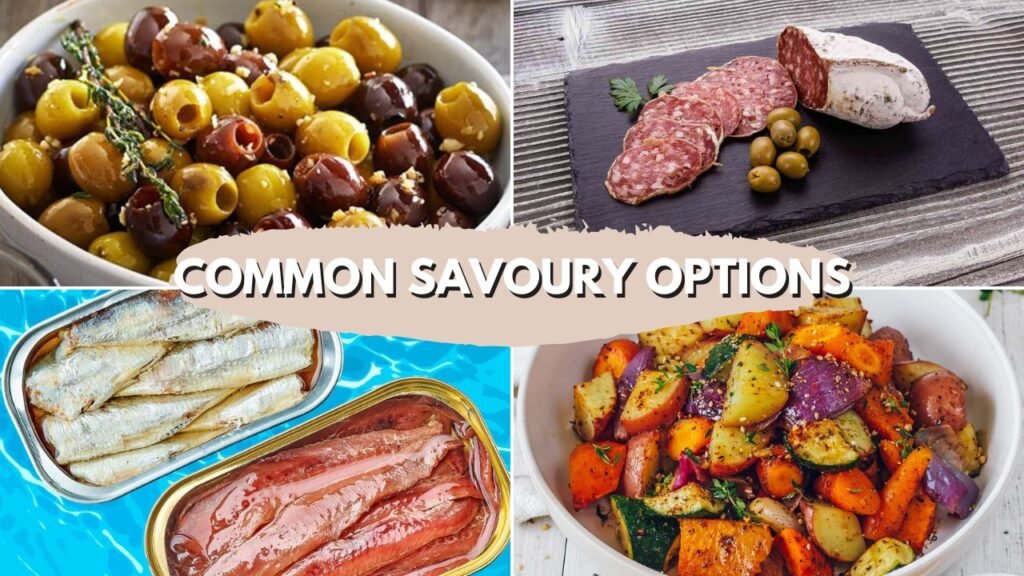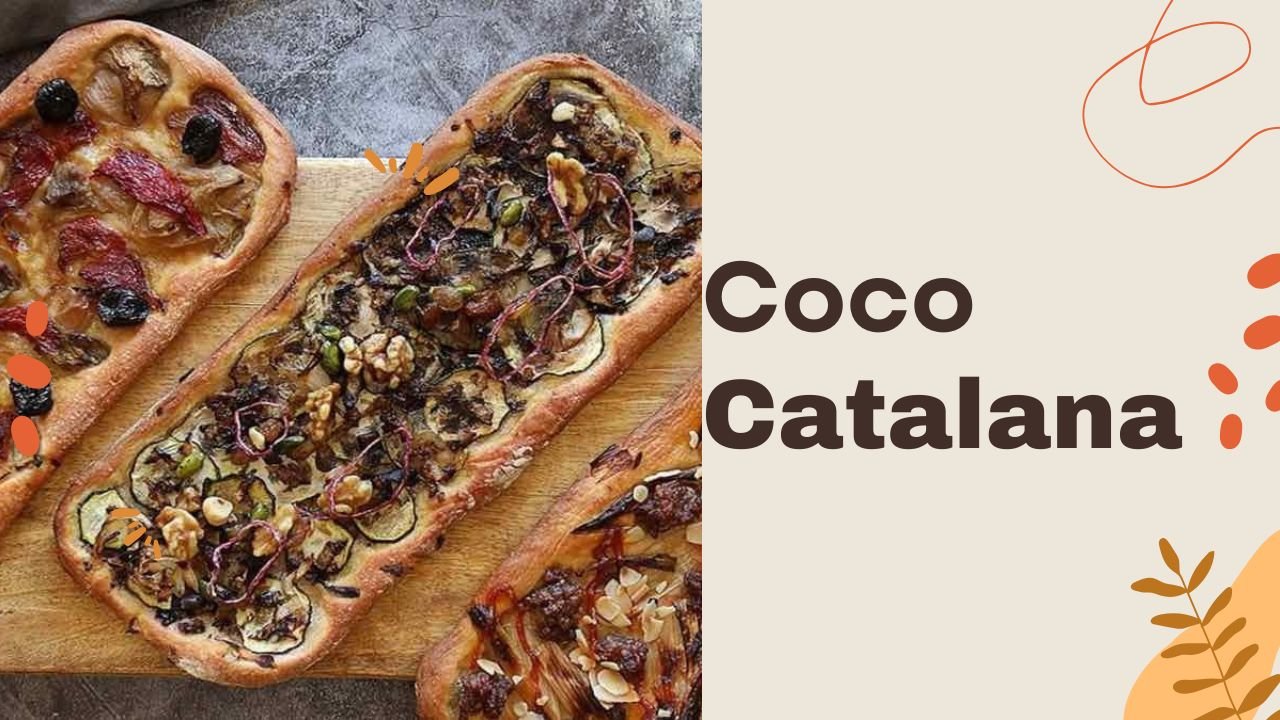Coca Catalana is the heart of Catalan cuisine. It is more than just a simple pastry, it is one of Catalonia’s most beloved culinary treasures. It is a flatbread which could be savoury, simple or beautifully decorated. It is a creativity which is more than a pizza; you can make it with seasonal, simple ingredients.
Cocas can be opened with the flavourful toppings or closed where there are fillings. It is packed in two layers. Mostly, there are so many varieties. You can top with colourful candied fruits and sugar for sweetness, more fresh vegetables, pine nuts, cream, marzipan, or even pork. They are particularly popular for breakfast, snacks or desserts during occasions.
In this blog post, you will learn how to bake this cake. This would be adventurous for you. I am overloaded and excited. Let’s get started!
Table of Contents
What is Coca Catalana?
Coca Catalana is a traditional flatbread from Catalonia, a region in northeastern Spain known for its rich culinary heritage. It is defined as a Spanish flatbread, tart or a kind of pizza. It is known for its distinct varieties. Coca isn’t just food in Catalonia — it’s a symbol of community and celebration. Different towns have different versions to styles of this cake. Mostly love sweet and others love savoury varieties.
Origins and History
The history is deeply rooted in agricultural practices and cultural traditions. Its history is in Valencia and the Balearic Islands. The word coca is believed to come from the Dutch word kok, meaning cake or pastry. In medieval times, there was a simple way to bake this cake from leftover bread dough by flattening it. It is a beloved dish, you can have this at many occasions, festivals, family gatherings, and everyday meals.
Basic Ingredients
Coca Catalana starts with a simple yet flavorful base, and from there, the possibilities are endless. Whether you prefer a sweet or savoury version, choosing the right ingredients is the key to creating an authentic and delicious coca.
Key Ingredients for the Dough
The dough is the heart of any coca. It’s light, airy, and slightly chewy — perfect for holding all kinds of toppings. You’ll need:
- Flour
- Yeast
- Olive oil
- Water
- Salt
Some traditional recipes also include a bit of sugar or anise to give a hint of sweetness, especially for sweet cocas.
Common Sweet Options
Sweet cocas are like a festive pastry and often look beautifully decorated. Popular toppings include:
- Candied fruit — Bright and colourful, perfect for special occasions.
- Pine nuts — Add crunch and a nutty flavour.
- Sugar — Sprinkled generously before baking for a sweet, slightly caramelized finish.
- Custard or cream — In some variations, a layer of cream is added for extra richness.

Common Savoury Options
Savoury cocas are equally delicious and can be as simple or as creative as you like. Some classic toppings include:
- Roasted vegetables — Peppers, onions, eggplant, and zucchini are popular choices.
- Sardines or anchovies — Add a salty, umami punch that pairs perfectly with the olive oil-rich dough.
- Sausages or cured meats — Such as chorizo or botifarra.
- Herbs and olives — To bring a Mediterranean touch.

Step-by-Step: How to Make Coca Catalana at Home
Making Coco Catalana is easier than you might think. It is such a good way to bring a catatonic taste to your kitchen. The following are the easy steps to prepare the dough:
Preparing the Dough
Step 1: Activate the yeast
In a small bowl, combine the lukewarm water, yeast or a pinch of sugar. Rest it for 5-10 minutes until foamy. This step shows us that the yeast is active.
Step 2: Mix the ingredients
In a large bowl, combine the dry ingredients like flour and salt. Add the yeast mixture and olive oil. Mix until a soft dough starts to form.
Step 3: Knead the dough
Transfer the dough to a lightly floured surface and knead for about 8–10 minutes until it’s smooth and elastic. You can knead this by hand or with a stand mixer.
Step 4: First rise
Lightly oil the large icing bowl and place the dough in a bowl, cover with a cloth or plastic wrap, and let it rise in a warm place for about 1 hour, or until doubled in size.
Step 5: Shape the coca
Punch down the dough gently, then roll it out into a thin, oval or rectangular shape on a parchment-lined baking sheet.
Tips for Baking Coca Like a Pro
Once you’ve prepared your coca and chosen your toppings, the final step is baking it to perfection.
How to Achieve a Crispy Yet Soft Base
- Make sure that you roll it thin and evenly. A thin crisp will stay light and crispy.
- Bake your cookie on a preheated pizza stone or a heavy baking sheet.
- Don’t pile too many toppings; there is a struggle to cook them evenly.
- Leave a small border of the dough free of toppings. This allows the crust to puff up and get crispy.
- Lightly brush the edges with olive oil before baking. This gives a golden, slightly crunchy crust.
Oven Temperature and Baking Time Advice
- Preheat your oven to a high temperature of around 220°C (425°F). A Hot oven gives a quick rise and crispy crust.
- Baking usually takes about 15–20 minutes, depending on the thickness and toppings. Keep an eye on it: you want golden edges and lightly caramelized toppings.
- If your oven doesn’t heat evenly, rotate the tray halfway through baking to ensure even browning.
“Leche frita is already irresistible, but with a few secret ingredients, you can turn this classic Spanish dessert into an unforgettable masterpiece.”
Delicious Ways to Serve Coca Catalana
la coca catalana isn’t just delicious — it’s also one of the most versatile dishes you can make. Mostly, it depends on the toppings and serving style. You can have this as an appetizer, snack or dessert.
Sweet Coca:
- Espresso
- Creamy café con leche
- Sweet dessert wine (like Moscatel or Pedro Ximénez)
- Herbal tea
Savoury Coca:
- white wine
- red wine (like Garnacha)
- Beer

Why You’ll Love Making (and Eating) Coca Catalana
You will fall in love with making coco catalana for so many reasons. There is so much fun and creativity in making coca food. These are traditional pastries or breads. You can not learn to make a recipe; you need to know the foundation of sweet and savoury. There is a perfect blend of flavours in both of these. You can mix and match toppings.
If you want something sweet, then enjoy bright candied fruits, crunchy pine nuts, and a generous sprinkle of sugar if you want to enjoy it with savoury, Pile on roasted vegetables, fresh herbs, or even slices of salty fish. Coca spain food gives a unique and personal flavour. It is also a true crowd-pleaser.
coca pastry is a goodness that this recipe will impress your guests. Guests love the rustic look, the colourful toppings, and the delicious flavours that come together in each bite. You are not just baking, you are gaining experience to bring people together and celebrate the joy of sharing food. You feel special by baking this on occasions. It’s incredibly versatile and a taste of authentic culture.
Conclusion
Coca Catalana is more than just a flatbread — spanish coca is a celebration of creativity, community, and the simple joy of good food. It is rich in history, versatility and cultural significance. It has many varieties of sweet and savoury. It encourages us to experience the toppings and styles.
Whether you choose to go sweet with colourful candied fruits and sugar or savoury with roasted vegetables and herbs, each coca you make brings a little piece of Catalonia into your kitchen. It’s a fun project for a weekend bake, a perfect dish to share with friends, or a unique addition to a family dinner.
We’d love to see what you create! Try making your own Coca-Cola, and don’t be afraid to get creative with the toppings. Share your photos, variations, or tips in the comments below — or tag us on social media so we can admire your delicious work.










